FMS FMM107P Owner's manual
- Category
- Remote controlled toys
- Type
- Owner's manual
This manual is also suitable for

DETAILED RIGID
FLAPS INSTALLED STRONG DURABLE EPO
STABLE
SMOOTH FLYING PERFORMANCE
FMSMODEL.COM
3000mm FOX
Manuel d’utilisation
Instruction Manual
Bedienungsanleitung
操作手册

WARNING: Read the ENTIRE instruction manual to become familiar with the features of the product before operating.
Failure to operate the product correctly can result in damage to the product,personal property and cause serious injury.
This is a sophisticated hobby product and NOT a toy. It must be operated with caution and common sense and failure to do so
could result in injury or damage to the product or other property. This product is not intended for use by children without direct
adult supervision.
This manual contains instructions for safety operation and maintenance. It is essential to read and follow all the instructions and
warnings in the manual prior to assembly, setup or use, in order to operate and avoid damage or serious injury.
WARNING
As the user of this product, you are solely responsible for operating in a manner that does not endanger yourself and others or
result in damage to the product or the property of others. This model is controlled by a radio signal subject to interference from
many sources outside your control. This interference can cause momentary loss of control so it is advisable to always keep a
safe distance in all directions around your model, as this margin will help avoid collisions or injury.
Age Recommendation: Not for children under 14 years. This is not a toy.
·Never operate your model with low transmitter batteries.
·Always operate your model in an open area away from cars, traffic or people.
·Avoid operating your model in the street where injury or damage can occur.
·Never operate the model in populated areas for any reason.
·Carefully follow the directions and warnings for this and any optional support equipment you use (chargers,rechargeable
battery packs, etc.)
·Keep all chemicals, small parts and anything electrical out of the reach of children.
·Moisture causes damage to electronics. Avoid water exposure to all equipment not specifically designed and protected for this
purpose.
·Never lick or any place of any your model in your mouth as it could cause serious injury or even death.
Lithium Polymer (Li-Po) Battery Warning
CAUTION: Always follow the manufacturer’s instructions for safe use and disposal of batteries. Fire, property
damage, or serious injury can result from the mishandling of Li-Po batteries.
By handling, charging or using a Li-Po Battery you assume all risks associated with lithium batteries.
If at any time the batteries begin to swell or balloon, discontinue use immediately!
Always store the batteries at room temperature in a dry area to extend the life of the battery. Always transport
or temporarily store the battery in a temperature range of 40-120F. Do not store the battery or model in a car or in direct sunlight.
If stored in a hot car, the battery can be damaged or even catch fire.
Never use a Ni-Mh Charger to charge Li-Po Batteries. Failure to charge the battery with a Li-Po compatible charger
may cause fire resulting in personal injury and property damage.
Never discharge Li-Po Cells below 3V.
Never leave charging batteries unattended.
Never charge damaged batteries.
Charging the Flight Battery Warning
Use a battery charger that is designed to safely charge the Li-Po Battery. Read the charger instructions care
fully before use. When charging the battery, make certain the battery is on a heat resistant surface. It is also highly
recommended to place the Li-Po Battery inside a fire resistant charging bag readily available at hobby shops or
online.
p w

3
Before assembly, please inspect the contents of the kit. The
photo below details the contents of the kit with labels. If any
parts are missing or defective, please identify the name or
part number (refer to the spare parts list near the end of the
manual) then contact your local shop or email us: support
Kit contents
A: Fuselage
B: Canopy hatch
C: Main wing set
D: Vertical stabilizer
E: Horizontal stabilizer
F: Spar set
Introduction
Kit contents
Model assembly
Battery installation
Receiver diagram
Get your model ready to fly
Clevis installation
Control horn and servo arm settings
Center of gravity(CG)
Before flying the model
Flying course
Troubleshooting
Spare parts list content
Table of contents
·····························································
·····
3
·························································3
·······················································4
············································· ········ 5
·········································
··
········ 6
··································
·····
·····
·····
·····
6
············································
··
··
·········· 8
·························· 8
··············································· 8
··············································9
···························································9
······················································10
············································10
Introduction
Thank you for purchasing the FMS 3000mm FOX. Featuring an
impressive wingspan of 3000mm, the FOX is one of the largest
wingspan production foam aircraft in the world. Utilizing FMS’
decades long experience in designing and producing model
aircraft, the FOX has an ultra-efficient airfoil along with a 70A
ESC power system- providing more than ample power for
high-powered aerobatic maneuvers.
Constructed with FMS’ new snap-together design, the FOX can
be easily transported and assembled at the field with no tools
required.
Powering the Fox is a Predator 4258, 460KV motor linked to a
70A ESC and a 15*7.5 foldable propeller; when paired with a
6S battery- this power system gives the 3000mm FOX
near-unlimited vertical performance- a rare sight for glider
aircraft. Meanwhile, the surfaces are controlled by 23g
high-torque servos, ensuring precise action and power for
extreme maneuvers.
Positive and negative loops, stall turns, point rolls and inverted
flight are just some of the aerobatics that the 3000mm Fox
could perform, the rest is up to the pilot!
Wingspan: 3000mm(118.11in)
Overall Length: 1873mm(73.73in)
Flying Weight: ~4700g
Motor Size: 4258-KV460
Wing Load: 64.5g/dm²(0.14oz/in²)
Wing Area: 74.4dm²(1153.2sq.in)
ESC: 70A
Servo: 23g Servo x 6
Recommended Battery: 22.2V 5000mAh 35C
Specifications
@fmsmodel.com
F.
E.
A.
B.
D.
C.
Features:
1.Large Wingspan
2.Powerful 4258 Motor, Predator 70A ESC
3.High torque 23G metal servos
4.Snap-together construction (glue-less and no screws
necessary)
5.Fast assembly time(10-15 minutes)
6.A 10 second quick-release wing, easily portable airframe
7.6S 5000mAh battery allows for around 30 minute flight time
8.Functional Flaps
9.Foldable propeller

Main wing installation
Vertical stabilizer installation
Horizontal stabilizer installation
4
Model assembly
1.Ensure the control horn faces down as shown. Carefully insert
the horizontal stabilizer to the horizontal stabilizer slot until it is
properly in place and you hear a click.
Note: Align and connect the elevator servo plugs to the servo
extensions located within the fuselage.
1.Slide the Horizontal stabilizer spar into the fuselage. Align and
install the vertical stabilizer over the spar and into the vertical
stabilizer slot of the fuselage.
2.Connect the elevator and rudder servos to their respective
extensions in the fuselage.
1.Align and slide the wing spar into the fuselage, then install both wings over the wing spar and into the wing slot of the fuselage.
2.Secure both wings onto the fuselage using the snap lock.The wings are successfully secured when you hear a click.
Notice: Ensure the snap lock is properly in place and the connectors on both sides are attached precisely and firmly.

5
3.Twist the tail section to the left and secure it using the snap
lock system. The tail section is successfully secured when a
click is heard.
1.Pull back on the latch, releasing the canopy.
2.Remove the canopy, revealing the battery compartment.
3.Apply hook and loop tape to the battery.
4.Install a fully charged battery into the battery compartment, with
the battery cables facing aft.
Note: The center of gravity can be adjusted by moving the battery
forward or aft.Having the correct center of gravity is critical to
achieving proper flight characteristics.
Model assembly
Battery installation

Important ESC and model information
The ESC included with the model has a safe start. If the motor battery is connected to the ESC and the throttle stick is not in
the low throttle or off position, the motor will not start until the throttle stick is moved to the low throttle or off position. Once the
throttle stick is moved to the low throttle or off position, the motor will emit a series of beeps. Several beeps with the same tune
means the ESC has detected the cells of the battery. The count of the beeps equals the cells of the battery. The motor is now
armed and will start when the throttle is moved.
The motor and ESC come pre-connected and the motor rotation should be correct. If for any reason the motor is rotating in the
wrong direction, simply reverse two of the three motor wires to change the direction of rotation.
The motor has an optional brake setting. The ESC comes with brake switched off and we recommend that the model be flown
with the brake off. However, the brake could be accidentally switched on if the motor battery is connected to the ESC while the
throttle stick is set at full throttle. To switch the brake off, move the throttle stick to full throttle and plug in
the motor battery. The
motor will beep one time. Move the throttle stick to low throttle or the off position. The motor is ready to run and the brake will
be switched off.
Battery Selection and Installation. We recommend the 22.2v 5000mAh 35C Li-Po battery. If using another battery, the battery
must be at least a 22.2v 5000mAh 35C battery. Your battery should be approximately the same capacity, dimension and weight
as the 22.2v 5000mAh 35C Li-Po battery to fit the fuselage without changing the center of gravity significantly.
1.
2.
3.
4.
6
Flap
6
6
Receiver diagram
Get your model ready to fly
The cables from the servo connector board should be connected
to your receiver in the order shown. Tuck the wire leads into the
recessed cavity towards the rear of the battery hatch.
Flap

Transmitter and model setup
Before getting started, bind your receiver with your transmitter.
Please refer to your transmitter manual for proper operation.
CAUTION: To prevent personal injury, DO NOT install the propel-
ler assembly onto the motor shaft while testing the control surfac-
es. DO NOT arm the ESC and do not turn on the transmitter until
the Transmitter Manual instructs you to do so.
Tips: Make sure all control sticks on your radio are in the neutral
position (rudder, elevator, ailerons) and the throttle is in the OFF
position. Make sure both ailerons move up and down (travel) the
same amount. This model tracks well when the left and right
ailerons travel the same amount in response to the control stick.
Move the controls on the transmitter to make sure the aircraft
control surface moves correctly. See diagrams right.
7
Control throws
The suggested control throw setting for the FOX are as follows (dual rate setting):
Tips: On the first flight, fly the model in low rate.
The first time you use high rates,be sure to fly at
low to medium speeds. High rate, as listed, is
only for EXTREME maneuvering.
Aileron
Bank left
Bank right
Elevator
Climb
Descend
Steering Rudder
Steer left
Steer right
20 16
12
20
18
24

8
More control throw
Less control throw
Horns Arms
a.
b.
c.
d.
e.
f.
Clevis installation
1.Pull the tube from the clevis to the linkage.
2.Carefully spread the clevis, then insert the clevis pin into the
desired hole in the control horn.
3.Move the tube to hold the clevis on the control horn.
Control horn and servo arm settings
The table shows the factory settings for the control horns
and servo arms. Fly the aircraft at the factory settings
before making changes.
After flying,you may choose to adjust the linkage positions
for the desired control response.
ElevatorRudderAilerons
Check the C.G. (Center of gravity)
When balancing your model, adjust the battery as necessary
so the model is level or slightly nose down. This is the correct
balance point for your model. After the first flights, the CG
position can be adjusted for your personal preference.
1. The recommended Center of Gravity (CG) location for your
model is(90-95mm) from the leading edge of the main wing
(as shown) with the battery pack installed. Mark the location of
the CG on top of the wing.
2. When balancing your model, support the plane at the marks
made on the bottom of the main wing with your fingers or a
commercially available balancing stand. This is the correct
balance point for your model. Make surethe model is assembled
and ready for flight before balancing.
90mm-95mm

Take off
Maintenance
Landing
Find a suitable flying site
Perform the range check for your plane
Monitor your flight time
Find a flying site clear of buildings, trees, power lines and
other obstructions. Until you know how much area will be
required and have mastered flying your plane in confined
spaces, choose a site which is at least the size of two to three
football fields - a flying field specifically for R/C planes is best.
Never fly near people - especially children, who can wander
unpredictably.
As a precaution, an operational ground range test should be
performed before the first flight each time you go out.
Performing a range test is a good way to detect problems
that could cause loss of control such as low batteries, defective
or damaged radio components, or radio interference. This
usually requires an assistant and should be done at the actual
flying site you will be using.
First turn on the transmitter, then install a fully-charged battery
into the fuselage. Connect the battery and install the hatch.
Remember, use care not to bump the throttle stick. Otherwise,
the propeller/fan will turn and possibly cause damage or injury.
Note: Please refer to your Transmitter Manual that came with
your radio control system to perform a ground range check. If
the controls are not working correctly or if anything seems
wrong, do not fly the model until you correct the problem. Make
certain all the servo wires are securely connected to the
receiver and the transmitter batteries have a good connection.
Monitor and limit your flight time using a timer (such as on a
wristwatch or in your transmitter if available). When the
batteries are getting low you will usually notice a performance
drop before the ESC cuts off motor power, so when the plane
starts flying slower you should land. Often (but not always)
power can be briefly restored after the motor cuts off by
holding the throttle stick all the way down for a few seconds.
To avoid an unexpected dead-stick landing on your first flight,
set your timer to a conservative 4 minutes. When your alarm
sounds you should land right away.
9
Before flying the model
Flying course
While applying power, slowly steer to keep the model straight.
The model should accelerate quickly. As the model gains flight
speed you will want to climb at a steady and even rate. It will
climb out at a nice angle of attack (AOA).
Flying
Always choose a wide-open space for flying your plane. It is
ideal for you to fly at a sanctioned flying field. If you are not
flying at an approved site always avoid flying near houses,
trees, wires and buildings. You should also be careful to avoid
flying in areas where there are many people, such as busy
parks, schoolyards, or soccer fields. Consult laws and
ordinances before choosing a location to fly your aircraft. After
takeoff, gain some altitude. Climb to a safe height before trying
technical manoeuvres, including high speed passes, inverted
flight, loops, and point rolls.
Land the model when you hear the motor pulsing (LVC) or if
you notice a reduction in power. If using a transmitter with a
timer, set the timer so you have enough flight time to make
several landing approaches.
The model’s three point landing gear allows the model to land
on hard surfaces. Align model directly into the wind and fly
down to the ground. Fly the airplane down to the ground using
1/4-1/3 throttle to keep enough energy for proper flare. Before
the model touches down, always fully decrease the throttle to
avoid damaging the propeller or other components. The key to
a great landing is to manage the power and elevator all the
way to the ground and set down lightly on the main landing
gear. After a few flights you will find the model can be set down
lightlyon the mains and you can hold the nose wheel off
balancing themodel on the mains until it slows and gently
settles the nose.
Repairs to the foam should be made with foam safe adhesives
such as hot glue, foam safe CA, and 5min epoxy. When parts
are not repairable, see the Spare Parts List for ordering by item
number.
Always check to make sure all screws on the aircraft are
tightened. Pay special attention to make sure the spinner is
firmly in place before every flight.

10
Trouble shooting
Problem Possible Cause Solution
Aircraft will not respond to
the throttlebut responds to
other controls.
-ESC is not armed.
-Throttle channel is reversed.
-Lower throttle stick and throttle trim to lowest settings.
-Reverse throttle channel on transmitter.
Extra propeller noise or
extra vibration.
-Damaged spinner, propeller,
motor or motor mount.
-Loose propeller and spinner parts.
-Propellor installed backwards.
-Replace damaged parts.
-Tighten parts for propeller adapter, propeller and spinner.
-Remove and install propeller correctly.
Reduced flight time or
aircraft underpowered.
-Flight battery charge is low.
-propeller installed backward.
-Flight battery damaged.
-Completely recharge flight battery.
-Replace flight battery and follow flight battery
instructions.
Control surface does not
move, or is slow to respond
to control inputs.
-Control surface, control horn,
linkage or servo damage.
-Wire damaged or connections
loose.
-Replace or repair damaged parts and adjust controls.
-Do a check of connections for loose wiring.
Controls reversed.
Channels are reversed in the
transmitter.
Do the control direction test and adjust controls for
aircraft and transmitter.
-Motor loses power
-Motor power pulses then
motor loses power.
-Damage to motor, or battery.
-Loss of power to aircraft.
-ESC uses default soft Low Voltage
Cutoff(LVC).
-Do a check of batteries, transmitter, receiver, ESC, motor
and wiring for damage(replace as needed).
-Land aircraft immediately and recharge flight battery.
LED on receiver flashes
slowly.
Power loss to receiver.
-Check connection from ESC to receiver.
-Check servos for damage.
-Check linkages for binding.
Spare parts list content
FMSRH101
FMSRH102
FMSRH103
FMSRH104
FMSRH105
FMSRH106
FMSRH107
FMSRH108
FMSRH109
FMSRH110
FMSRH111
FMSRH112
FMSRH113
FMSRH114
FMSPROP051
Front fuselage
Rear fuselage
Main wing set
Horizontal stabilizer
Spinner
Prop adapter
Cockpit
Side window (plastic)
Tail wheel set
Wing wheel set
Air intake
Sticker
Spar set
Linkage rod and holder
15x7.5 (2-blade) propeller
FMSBM032
FMSDJ014
FMSDZ005
PRKV460
PRESC022
PR23MGAP
FMSCON007
Motor board
Motor Mount
Motor Shaft
4258 KV460 motor
70A ESC
Predator 23g analog metal gear servo positive
Multi-connector set
Visit our website: www.fmsmodel.com to see photo of this product. Enter the key word "ESC" in the search bar for the
stock ESC instruction manual.

11
WARNUNG: Lesen Sie die GESAMTE Bedienungsanleitung, um sich vor der Inbetriebnahme mit den Funktionen
des Produkts vertraut zu machen.
Wenn das Produkt nicht ordnungsgemäß bedient wird, kann dies zu Schäden am Produkt oder persönlichem
Eigentum führen und schwere Verletzungen verursachen.
Dieses Produkt ist kein Spielzeug! Es muss mit Vorsicht und gesundem Menschenverstand betrieben werden.
Andernfalls kann es zu Verletzungen oder Schäden am Produkt oder anderen Sachwerten führen. Dieses Produkt
ist nicht für den Betrieb durch Kinder ohne direkte Aufsicht von Erwachsenen vorgesehen.
Diese Anleitung enthält Hinweise zu Sicherheit und Wartung. Es ist wichtig, dass vor der Verwendung alle
Anweisungen und Warnungen in der Anleitung gelesen und befolgt werden, um Schäden oder schwere
Verletzungen zu vermeiden.
Warnhinweise
Als Benutzer dieses Produkts sind Sie allein dafür verantwortlich dieses Produkt so zu betreiben, dass weder Sie
selbst noch andere gefährdet oder Schäden am Produkt oder Eigentum anderer verursacht werden.
Dieses Modell wird von einem Funksignal gesteuert, das von vielen Quellen außerhalb Ihrer Kontrolle gestört
werden kann. Solche Störungen können zu einem vorübergehenden Kontrollverlust führen. Daher sollte immer
einen Sicherheitsabstand zu Personen und Gebäuden eingehalten werden.
Altersempfehlung: Nicht für Kinder unter 14 Jahren. Dies ist kein Spielzeug.
· Betreiben Sie Ihr Modell niemals mit leeren Senderbatterien.
· Betreiben Sie Ihr Modell immer in einem offenen Bereich, abseits von Gebäuden, Verkehr oder Personen.
· Befolgen Sie die gesetzlichen Regelungen Ihres Landes zum Betrieb von ferngesteuerten Modellflugzeugen.
· Befolgen Sie sorgfältig die Anweisungen und Warnungen für dieses und alle unterstützenden Geräte, die Sie
verwenden (Ladegeräte, wiederaufladbare Akkus usw.).
· Bewahren Sie alle Chemikalien, Kleinteile und elektrischen Geräte außerhalb der Reichweite von Kindern auf.
· Feuchtigkeit verursacht Schäden an der Elektronik. Vermeiden Sie, dass die Produkte Wasser ausgesetzt
werden, die nicht speziell für diesen Zweck entworfen und geschützt sind.
· Nehmen Sie Teile des Produkts niemals in den Mund, da dies zu schweren Verletzungen oder sogar zum Tod
führen kann.
VORSICHT: Befolgen Sie immer die Anweisungen des Herstellers zur sicheren Verwendung und Entsorgung
von Batterien. Durch falsche Handhabung von Li-Po-Batterien können Feuer, Sachschäden oder schwere
Verletzungen verursacht werden.
Seien Sie sich über alle Risiken klar, die mit dem Umgang von Lithium Polymer (LiPo) Akkus verbunden sind.
Wenn die Akkus zu irgendeinem Zeitpunkt anschwellen oder aufblähen, verwenden Sie diese auf keinen Fall
mehr!
Um die Lebensdauer des Akkus zu verlängern sollten dieser bei Zimmertemperatur in einem trockenen Bereich
gelagert werden. Bewahren Sie den Akku oder das Modell nicht in einem Auto oder in direktem Sonnenlicht
auf. Wenn der Akku über einen längeren Zeitraum zu hohen Temperaturen ausgesetzt wird kann dieser
beschädigt werden oder sogar Feuer fangen.
Verwenden Sie niemals ein NiMh-Ladegerät, um Li-Po-Akkus aufzuladen. Wenn der Akku nicht mit einem
Li-Po-kompatiblen Ladegerät geladen wird, kann dies zu einem Brand führen, der zu Personen- und Sachschäden
führen kann.
Niemals Li-Po Zellen unter 3V entladen.
Lassen Sie Akkus beim Laden niemals unbeaufsichtigt.
Laden Sie niemals beschädigte Akkus auf.
Aufladen des LiPo-Akkus: Verwenden Sie ein Ladegerät, das die Li-Po-Batterie sicher aufladen kann. Lesen
Sie vor dem Gebrauch die Anweisungen des Ladegeräts sorgfältig durch. Achten Sie beim Laden des Akkus
darauf, dass sich der Akku auf einer hitzebeständigen Oberfläche befindet. Es wird auch dringend empfohlen,
den Li-Po Akku in einem feuerbeständigen LiPo-Koffer zu laden. LiPo Koffer finden Sie bei Ihrem Fachhändler
oder im Internet.
Sicherheitsvorkehrungen
Hinweise zu LiPo-Akkus

12
Bitte überprüfen Sie vor der Endmontage ob alle Teile des
Modells enthalten sind. Das folgende Bild zeigt den Inhalt des
Kits.
Sollten Teile fehlen notieren Sie sich bitte den Namen und die
Teilenummer (siehe Ersatzteilliste am Ende dieser
Bauanleitung) und kontaktieren Sie Ihren lokalen Händler oder
senden Sie uns eine E-Mail an [email protected].
Lieferumfang
A: Rumpf
B: Kabinenhaube
C: Tragflächen Set
D: Seitenleitwerk
E: Höhenleitwerk
F: Gestänge Set
Inhaltsverzeichnis
Einleitung
Spannweite: 3000 mm
Gesamtlänge: 1873 mm
Fluggewicht: ~ 4700 g
Motor: 4258-KV460
Flächenbelastung: 64.5g/dm²
Flächeninhalt: 74.4dm²
Regler: 70A
Servo: 23g Servo x 6
Empfohlener Akku: 22.2V 5000mAh 35C
Technische Daten
Vielen Dank für den Kauf der FMS 3000mm FOX. Mit einer
beeindruckenden Flügelspannweite von 3 Metern ist die FOX
eines der größten Schaumflugmodelle der Welt. Die
jahrzehntelange Erfahrung von FMS macht das Möglich!
Die FOX verfügt über ein hocheffizientes Tragflächenprofil und
ein leistungsstarkes Brushless-Antriebssystem, das mehr als
genug Kraft für spektakuläre Kunstflugmanöver bietet. Der
installierte 460KV-Motor, der 70A Regler und der 15x7.5
Klapppropeller verbunden mit einem separat erhältlichen 6S
LiPo Akku verleihen dem Modell nahezu unbegrenzte vertikale
Leistung und bis zu 30 Minuten Flugzeit. Die präzisen
23g-Servos mit Metallgetriebe gewährleisten die Präzision für
extreme Manöver. Positive und negative Loops, Stall Turns,
Point Rolls und Rückenflug sind nur einige der Manöver, die
die FOX im Stande ist zu leisten. Der Rest liegt beim Piloten!
Mit dem neuen "Snap-Together"-System von FMS kann die
FOX problemlos und schnell ohne Werkzeug und Klebstoff
montiert und demontiert werden. Zudem lässt sich das Modell
durch abnehmbare Flächen und ein abnehmbares Heckleitwerk
sicher und platzsparend transportieren.
Einleitung
Lieferumfang
Montage des Modells
Einsetzen des Akkus
Anschluss an den Empfänger
Flugvorbereitungen
Montage der Gabelköpfe
Ruderhorn- und Servoarmeinstellung
Schwerpunkt
Vor dem Erstflug
Fluggrundlagen
Problemlösungen
Ersatzteile
···························································12
·······················································
···
12
················································
13
··········································
······14
····································15
·································· ···· ····
···········
·····
15
···············
·················
················
·················
··
··
··
17
17
·······································
17
·············································18
······················································18
····································
········
······
······
········
········
········
········ ········
········19
········································· ········19
Merkmale:
1. Enorme Spannweite
2. Leistungsstarker Brushless-Motor und Predator 70A Regler
3. High Torque 23g Servos mit Metallgetriebe
4. "Snap-Together"-Konstruktion (klebe- und schraubfreie
Montage)
5. Schnelle Montagezeit (10 bis 15 Minuten)
6. 6S 5000mAh Akku empfohlen für etwa 30 Minuten Flugzeit
7. Funktionsfähige Landeklappen
8. Klappluftschraube
F.
E.
A.
B.
D.
C.

Montage des Flügels
Montage des Seitenleitwerks
Montage des Höhenruders
13
Montage des Modells
Stellen Sie sicher, dass das Ruderhorn wie abgebildet nach unten
1. Schieben Sie den Flächenverbinder wie abgebildet in den Rumpf und stecken dann die beiden Flügelhälften auf den
Flächenverbinder bis zur Flügelaufnahme am Rumpf.
2. Sichern Sie beiden Flügelhälften mit dem Schnappverschluss am Rumpf. Die Flügel sind erfolgreich gesichert, wenn Sie ein
Klicken hören.
Hinweis: Stellen Sie sicher, dass die Schnappverriegelung richtig sitzt und die Anschlüsse auf beiden Seiten exakt und fest
angebracht sind.
zeigt. Stecken Sie das Höhenleitwerk vorsichtig in die Öffnung
des Seitenleitwerks bis ein klicken zu hören ist.
Hinweis: Verbinden Sie die Servostecker im Rumpf.
1. Schieben Sie das Verbindungsrohr in den Rumpf. Positionie-
ren Sie nun das gesamte Heckleitwerk vorsichtig am Rumpf.
2. Verbinden Sie die Höhen- und Seitenruderservostecker mit
den entsprechenden Verlängerungskabeln im Rumpf.

14
3.Drehen Sie das gesamte Heckleitwerk vorsichtig nach links bis
zur Einrastung. Das Leitwerk ist eingerastet sobald ein klicken zu
hören ist.
1. Ziehen Sie die Verriegelung zurück.
2. Nehmen Sie die Kabinenhaube ab.
3. Bringen Sie etwas Klettband an Ihrem Akku an
4. Setzen Sie den vollständig geladenen Flugakku in das
Akkufach. Die Kabel des Akkus sollten nach hinten zeigen.
Hinweis: Der Schwerpunkt kann durch Verschieben des
Flugakkus geändert werden. Ein korrekter Schwerpunkt ist
wichtig für die idealen Flugeigenschaften.
Montage des Modells
Einsetzen des Akkus

Wichtige Informationen zum Regler
Der eingebaute Regler ist mit einer Sicherheitsschaltung versehen. Sollte der Akku angeschlossen sein und der Gashebel
nicht auf niedrig / Motor aus stehen, wird der Motor nicht starten. Wird der Gashebel ganz nach unten bewegt erzeugt der
Regler eine Tonserie. Töne in der gleichen Höhe geben die Anzahl der Zellen an die der Regler gezählt hat. Diese ist gleich
mit der Zellenanzahl des Akkus. Der Regler ist jetzt scharf geschaltet und startet den Motor wenn der Gashebel bewegt wird.
Motor und Regler sind bereits verkabelt und auch die Drehrichtung des Motors sollte korrekt sein. Sollte der Motor in die
falsche Richtung drehen, tauschen Sie zwei der drei Motoranschlusskabel um die Richtung wieder zu ändern.
Der Regler ist mit einer optionalen Bremse ausgestattet. Wir empfehlen das Modell mit der deaktivierten Bremse zu fliegen.
Es ist möglich die Bremse versehentlich zu aktivieren wenn der Akku mit dem Regler verbunden wird und der Gashebel auf
Vollgas steht. Um die Bremse wieder auszuschalten gehen Sie mit dem Gashebel wieder auf Vollgas und verbinden den Akku.
Vom Motor ertönt ein Piepton. Bewegen Sie den Gashebel auf Leerlauf oder Motor aus. Der Motor ist dann betriebsbereit und
die Bremse ausgeschaltet.
Akkuauswahl und Einbau:
Wir empfehlen einen Lipo Akku mit 22.2V (6S), 5000mAh 35C. Sollten Sie einen anderen Akku verwenden muß dieser mind-
estens die gleichen Spezifikationen in Leistung und Abmessung aufweisen.damit der Schwerpunkt nicht wesentlich geändert
wird.
1.
2.
3.
4.
15
Anschluss an den Empfänger
Alle Servokabel werden wie hier abgebildet an Ihrem
Empgänger angeschlossen.
Flugvorbereitungen
Querruder
Höhenruder
Gas
Seitenruder
Klappen
Klappen
6
6

Testen der Steuerfunktionen
Bevor Sie mit diesem Schritt beginnen, binden Sie bitte der
Anleitung ihres Senders entsprechend den
Empfänger mit dem Sender.
ACHTUNG: Um mögliche Verletzungen zu vermeiden darf der
Propeller bei dem Testen der Ruder NICHT
auf der Welle montiert sein. Armieren Sie den Regler NICHT
und schalten auch nicht den Sender ein bevor
es in der Anleitung des Senders vorgeben wird.
TIPP: Stellen Sie sicher, dass alle Steuerhebel auf dem Sender
auf der neutralen Position sind und der
Gashebel auf Motor aus.
Stellen Sie sicher, dass beide Querruder den gleichen Weg im
Verhältnis zum Steuerknüppelausschlag
ausschlagen.
Bewegen Sie die Steuerhebel des Sender um sicher zu stellen,
dass sich die Ruder korrekt bewegen.
Sehen Sie dazu die Abbildungen unten. Sollten die Ruder in die
falsche Richtung arbeiten reversieren Sie
die Funktion. Lesen Sie dazu bitte in der Anleitung des Sender
nach.
16
Ruderausschläge
Die empfohlenen Ruderausschlag-Einstellungen sind (Dual Rate):
Querruder
Rollen links
Rollen rechts
Höhenruder
Steigen
Sinken
Seitenruder
Gieren links
Gieren rechts
maximale Ausschläge normale Ausschläge
Höhenruder
Querruder
Seitenruder
20mm oben / unten 16mm oben / unten
12mm oben / unten
20mm links / rechts
18mm oben / unten
24mm links / rechts
Tipp: Fliegen Sie das Modell beim ersten Flug
mit "normalen Ausschlägen". Wenn Sie zum
ersten Mal "maximale Ausschläge" verwenden,
sollten Sie bei niedrigen bis mittleren
Geschwindigkeiten fliegen.

17
Mehr Ruderausschlag
Weniger
Ruderausschlag
Ruderhorn Servoarm
a.
b.
c.
d.
e.
f.
Montage der Gabelköpfe
1. Ziehen Sie den Ring vom Gabelkopf zum Gestänge.
2. Spreizen Sie den Gabelkopf vorsichtig und führen Sie den
Gabelkopfstift in das gewünschte Loch im Ruderhorn ein.
3. Befestigen Sie den Ring um den Gabelkopf am Ruderhorn
zu halten.
Ruderhorn- und Servoarm-Einstellungen
Die Tabelle zeigt die Werkseinstellungen für die
Ruderhörner und Servoarme. Fliegen Sie das Flugzeug
mit den Werkseinstellungen, bevor Sie Änderungen
vornehmen.Nach dem Flug können Sie die Einstellungen
nach Ihren Wünschen anpassen.
Höhen
ruder
Seiten
ruder
Quer
ruder
Einstellen des Schwerpunkts
Setzen Sie zum Ausbalancieren des Schwerpunktes den
Antriebsakku ein. Richten Sie den Akku so aus, dass das Modell
gerade oder mit der Nase leicht nach unten zeigt. Nach den
ersten Flügen können Sie dann den Schwerpunkt nach ihren
persönliche Vorlieben einrichten.
1. Der empfohlene Schwerpunkt für das Modell befindet sich mit
eingesetztem Akku 90-95mm von der Tragflächenvorderkante
nach hinten gemessen. Markieren Sie den Schwerpunkt auf der
Tragflächenoberseite.
2. Balancieren Sie das Modell auf einer Schwerpunktwaage aus.
Bitte beachten Sie dass das Modell dabei flugfertig ausgerüstet
sein muss.
90mm-95mm

Starten
Instandhaltung
Landen
Finden Sie einen geeigneten Flugplatz
Führen Sie einen Reichweitentest für Ihr Modell durch
Überwachen Sie Ihre Flugzeit
Finden Sie einen Flugplatz frei von Gebäuden, Bäumen,
Stromleitungen und anderen Hindernissen. Bis Sie wissen,
wie viel Fläche Sie zum fliegen brauchen, wählen
Sie einen Platz der mindestens die Größe von 2 bis 3 Fussball-
feldern hat. Wählen Sie am besten einen RC Flugplatz eines
Modellflugvereins. Fliegen Sie dabei niemals in der Nähe von
Menschen - besonders von Kindern, die unvorhersehbar
handeln könnten.
Überwachen oder Begrenzen Sie Ihre Flugzeit mit einem Timer
(z.B. auf einer Armbanduhr, einem Smartphone oder auf Ihrem
Sender, falls verfügbar).
Wenn der Akku während des Fluges fast leer ist bemerken Sie
normalerweise einen Leistungsabfall, bevor der Regler die
Motorleistung unterbricht. Wenn das Modell langsamer wird
sollten Sie also landen.
Stellen Sie Ihren Timer auf 4 Minuten ein um einen unerwartete
Leistungsabfall zu vermeiden. Wenn der Alarm des Timers
ertönt sollten Sie landen.
18
Vor dem Erstflug
Fluggrundlagen
Beschleunigen Sie das Modell vorsichtig und steuern Sie es
langsam um es gerade zu halten. Erhöhen Sie die
Beschleunigung und halten Sie eine gleichmäßige
Geschwindigkeit um das Modell in einem schönen Anstellwinkel
in die Luft steigen zu lassen.
Fliegen
Wählen Sie immer einen weiten und offenen Platz um das
Modell zu fliegen. Besuchen Sie einen RC Flugplatz eines
Modellflugvereins. Fliegen Sie auf keinen Fall an Orten, an
denen der Betrieb eines ferngesteuerten Flugzeugs nicht
zulässig ist (Flughäfen, Naturschutzgebiete, Siedlungen, ...).
Nach dem Start bringen Sie Ihr Modell auf eine sichere
Flughöhe, bevor Sie Flugmanöver wie Rollen,Loopings oder
ähnliches ausprobieren.
Landen Sie das Modell, sobald Sie eine Leistungsreduzierung
bemerken oder Ihr eingestellter Timer ertönt.Stellen Sie Ihren
Timer so ein, dass Ihnen genug Flugzeit bleibt, um mehrere
Landeanflüge zu haben.Ist das Modell mit einem Fahrwerk
ausgestattet können Sie auf harten Pisten landen. Richten Sie
das Modell direkt gegen den Wind aus und setzen Sie mit 1/4
bis 1/3 Gas zur Landung an. Bevor das Modell aufsetzt sollte
der Gasknüppel in der 0-Stellung stehen um Schäden am
Propeller oder anderen Komponenten zu vermeiden.
Reparaturen am Schaummodell sollten mit schaumsicheren
Klebstoffen wie Heißkleber, Sekundenkleber speziell für
Schaumstoff oder 5.min Epoxy erfolgen.
Wenn Teile nicht reparierbar sind finden Sie am Ende dieser
Anleitung die Ersatzteilliste mit allen Bestellnummern.
Überprüfen Sie vor und nach jedem Flug ob alle Schrauben
am Modell festgezogen sind. Achten Sie insbesondere darauf,
dass Spinner und Luftschraube vor jedem Flug fest sitzen und
frei drehen.
Als Vorsichtsmaßnahme sollte vor jedem Flug ein
Reichweitentest durchgeführt werden, um Probleme zu
erkennen, die zu einem Verlust der Kontrolle führen könnten
(z.B. schwache Batterien, defekte oder beschädigte
Fernsteuerungskomponenten, Funkstörungen). Dies erfordert
einen Kollegen oder Assistenten.
Schalten Sie zuerst den Sender ein und schließen Sie einen
vollgeladenen Akku im Modell an. Achten Sie darauf dass sich
der Gasknüppel in Neutralstellung befindet. Andernfalls
könnten Propeller oder Lüfter Schäden oder Verletzungen
verursachen.
Hinweis: Lesen Sie zum Reichweitentest auch die
Bedienungsanleitung Ihrer Fernsteuerung.

Besuchen Sie unsere Webseite um Fotos der Ersatzteile zu sehen: www.d-power-modellbau.com
19
Problemlösungen
Problem Mögliche Ursache Lösung
Modell nimmt kein Gas an,
andere Steuerungsbefehle
funktionieren aber
-Regler reagiert nicht
-Gaskanal ist umgekehrt
-Gasknüppel ist nicht ganz unten oder Trimmung zu hoch
-Gaskanal am Sender umkehren
Ungewöhnliche
Propellergeräusche oder
Vibrationen
-Spinner, Propeller,Motor oder
Motorhalterung defekt
-Spinner oder Propeller lose
-Propeller falsch herum montiert
-Defekte Teile austauschen
-Lose Teile befestigen
-Propeller richtig montieren
Zu kurze Flugdauer oder
Antrieb ist nicht kraftvoll
genug
- Flugakku ist zu leer
- Propeller falsch herum montiert
- Flugakku defekt
- Vollständiges Aufladen des Flugakkus
- Flugakku ersetzen
Ruder bewegen sich nicht
oder reagieren nur
langsam auf Steuerbefehle
- Ruder, Ruderhörner, Anlenkung
oder Servo beschädigt
- Kabel beschädigt oder
Servosstecker lose
- Austauschen oder Reparieren der defekten Teile
- Kabel und Stecker überprüfen
Ruder schlagen in die
falsche Richtung aus
Kanäle auf dem Sender sind
umgekehrt
Testen der Servowegeinstellungen und Konfiguration
der Kanäle am Sender
- Motor verliert Leistung
- Motor oder Akku defekt
- Stromzufuhr unterbrochen
- Akku, Empfänger, Regler, Motor und Verkabelung
überprüfen (austauschen bei Defekt)
- Modell unverzüglich landen und überprüfen
LED am Empfänger blinkt
langsam
Empfänger hat keinen Strom
- Überprüfen der Verbindung zwischen Regler und
Empfänger.
- Servos auf Defekt überprüfen.
- Überbrüfen ob der Empfänger korrekt mit dem Sender
gebunden ist
Ersatzteilliste
FMSRH101
FMSRH102
FMSRH103
FMSRH104
FMSRH105
FMSRH106
FMSRH107
FMSRH108
FMSRH109
FMSRH110
FMSRH111
FMSRH112
FMSRH113
FMSRH114
FMSPROP051
Rumpf
Seitenleitwerk
Flächen-Set
Höhenleitwerk
Spinner
Prop Adapter
Cockpit
Seitenfenster (Kunststoff)
Heck-Rad Set
Flächen-Räder Set
Lufteinlass
Aufkleber
Rundstab Set
Anlenkungsgestänge
15 x 7.5 2-Blatt Propeller
FMSBM032
FMSDJ014
FMSDZ005
PRKV460
PRESC022
PR23MGAP
FMSCON007
Motor Board
Motorhalter
Motorwelle
4258 KV460 Motor
70A Regler
23g Metallgetriebe Servo
Multi-Connector Set

20
ATTENTION : Lisez intégralement ce manuel d’utilisation pour vous familiariser avec les caractéristiques de ce produit avant de
l’utiliser. Ne pas utiliser correctement ce produit peut entraîner des dommages au produit, aux biens matériels et causer des bless-
ures graves.
Il s’agit d’un produit de loisir technique, sophistiqué, et non d’un jouet. Il doit être utilisé avec précaution et bon sens, et requiert
quelques connaissances de base en mécanique. Ne pas utiliser ce produit en sécurité et de manière responsable peut entraîner
des blessures ou des dégâts au produit et envers des tiers. Ce produit n’est pas prévu pour une utilisation par des enfants sans la
surveillance directe par un adulte.
Ce manuel contient des instructions concernant la sécurité, l’utilisation et l’entretien. Il est essentiel de lire et de suivre toutes les
instructions et de respecter les avertissements de ce manuel avant de monter, de régler ou d’utiliser le produit, de façon à l’exploiter
correctement et éviter les dégâts ou blessures graves.
ATTENTION
En tant qu’utilisateur de ce produit, vous êtes seul responsable de son utilisation, de manière à ne pas vous mettre en danger, et à
ne pas mettre les autres en danger, et à ne pas endommager ce produit ou causer de dégâts à des tiers. Ce modèle est piloté par
un signal radio qui peut être soumis à des interférences provenant de sources variées que vous ne contrôlez pas. Ces interférences
peuvent causer une perte momentanée de contrôle, aussi est-il prudent de toujours garder une distance de sécurité dans toutes les
directions, autour de votre modèle, cette marge vous aidant à éviter les collisions ou les blessures
Âge recommandé : Ce produit ne doit pas être utilisé par des enfants de moins de 14 ans. Ce n’est pas un jouet.
• N’utilisez jamais votre modèle avec des piles faibles dans l’émetteur.
• Utilisez toujours votre modèle dans un espace vaste, sans véhicules, sans circulation et sans personnes.
• N’utilisez pas le modèle dans les rues, où vous pourriez occasionner des blessures ou des dégâts.
• N‘utilisez jamais le modèle pour quelque raison que ce soit dans la rue ou dans des zones peuplées.
• Suivez soigneusement les instructions et les conseils de ce manuel et ceux des équipements optionnels (chargeurs, accus
rechargeables, etc.).
• Tenez tous les produits chimiques, les petites pièces et tout composant électrique hors de portée des enfants.
• L‘humidité peut causer des dégâts à l'électronique. Evitez d‘exposer à l‘eau les équipements non conçus spécialement à cet effet
et spécialement protégés.
• Ne léchez pas, et ne placez aucune partie du modèle dans votre bouche, car cela peut entraîner des blessures graves et même
la mort.
Attention : Suivez toujours les instructions du fabricant pour utiliser les accus et vous en débarrasser. Un mauvais usage d'accus
LiPo peut entraîner un incendie, des dégâts matériels ou des blessures graves.
En manipulant, chargeant ou utilisant des accus LiPo, vous assumez tous les risques associés aux accus au Lithium.
Si à n’importe quel moment, l’accu commence à gonfler, arrêtez immédiatement de l’utiliser !
Charger ou décharger un accu gonflé peut entraîner un incendie.
Stockez toujours les accus à température ambiante dans un espace sec pour augmenter la durée de vie de l’accu.Transportez ou
stockez toujours les accus dans une plage de températures de 5 à 48 °C. Ne stockez pas les accusou le modèle dans une voiture
ou directement à la chaleur du soleil. Un accu stocké dans une voiture chaude peutêtre endommagé et éventuellement prendre feu.
N’utilisez jamais un chargeur pour accus NiMh. Ne pas charger avec un chargeur compatible LiPo peut entraîner un incendie,
entraînant des blessures et des dégâts matériels.
Ne déchargez jamais les éléments LiPo à moins de 3 V par élément.
Ne laissez jamais une charge se faire sans surveillance.
Ne chargez jamais un accu endommagé.
Vous devez charger les accus LiPo uniquement avec un chargeur spécial LiPo. Lisez bien les instructions de votre chargeur avant
usage. Quand vous chargez l’accu, vérifiez que l’accu est sur une surface ininflammable. Il est également conseillé de placer les
accus LiPo dans un sac résistant au feu que vous trouverez facilement dans les magasins de modélisme ou sur les boutiques en
ligne.
Consignes de sécurité et avertissements
Avertissement concernant les accus Lithium Polymère (LiPo)
Page is loading ...
Page is loading ...
Page is loading ...
Page is loading ...
Page is loading ...
Page is loading ...
Page is loading ...
Page is loading ...
Page is loading ...
Page is loading ...
Page is loading ...
Page is loading ...
Page is loading ...
Page is loading ...
Page is loading ...
Page is loading ...
-
 1
1
-
 2
2
-
 3
3
-
 4
4
-
 5
5
-
 6
6
-
 7
7
-
 8
8
-
 9
9
-
 10
10
-
 11
11
-
 12
12
-
 13
13
-
 14
14
-
 15
15
-
 16
16
-
 17
17
-
 18
18
-
 19
19
-
 20
20
-
 21
21
-
 22
22
-
 23
23
-
 24
24
-
 25
25
-
 26
26
-
 27
27
-
 28
28
-
 29
29
-
 30
30
-
 31
31
-
 32
32
-
 33
33
-
 34
34
-
 35
35
-
 36
36
FMS FMM107P Owner's manual
- Category
- Remote controlled toys
- Type
- Owner's manual
- This manual is also suitable for
Ask a question and I''ll find the answer in the document
Finding information in a document is now easier with AI
in other languages
- français: FMS FMM107P Le manuel du propriétaire
- Deutsch: FMS FMM107P Bedienungsanleitung
Related papers
-
FMS Models FMM122RX Owner's manual
-
FMS Models FMM071RX Owner's manual
-
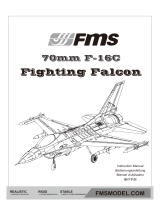 FMS Models FMM1102PX Owner's manual
FMS Models FMM1102PX Owner's manual
-
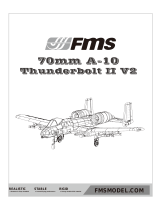 FMS Models FMM113PX Owner's manual
FMS Models FMM113PX Owner's manual
-
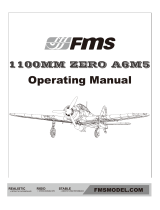 FMS Models FMM082P Owner's manual
FMS Models FMM082P Owner's manual
-
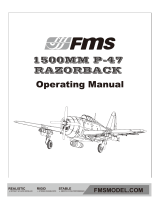 FMS Models FMM089PX Owner's manual
FMS Models FMM089PX Owner's manual
-
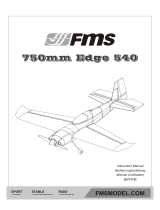 FMS Models FMM120P Owner's manual
FMS Models FMM120P Owner's manual
-
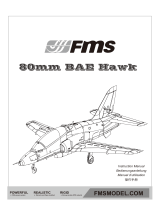 FMS Models FMM099P2 Owner's manual
FMS Models FMM099P2 Owner's manual
-
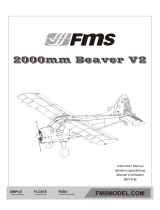 FMS Models FMM090P1 Owner's manual
FMS Models FMM090P1 Owner's manual
-
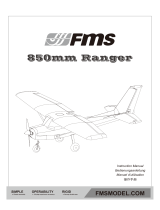 FMS Models 850mm Ranger Owner's manual
FMS Models 850mm Ranger Owner's manual
Other documents
-
Modster Piper J3 Owner's manual
-
Modster Sky Trainer 182 Cessna Owner's manual
-
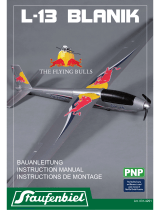 Staufenbiel L-13 Blanik User manual
Staufenbiel L-13 Blanik User manual
-
Modster 1100mm T-28 User manual
-
Modster BIGFOOT Owner's manual
-
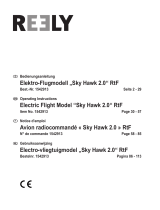 Reely 1542913 Operating instructions
Reely 1542913 Operating instructions
-
Arrows HOBBY 1300mm User manual
-
Arrows AH015P User manual
-
Modster 265046 Owner's manual
-
ROBBE SZD-54 Installation Instructions And User Manual













































